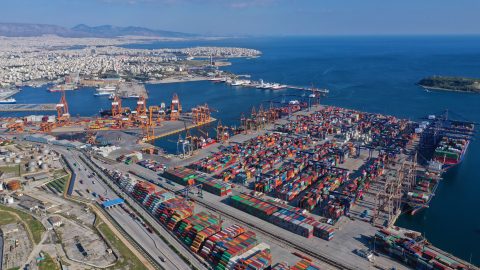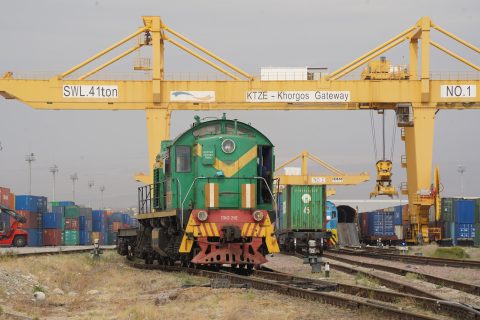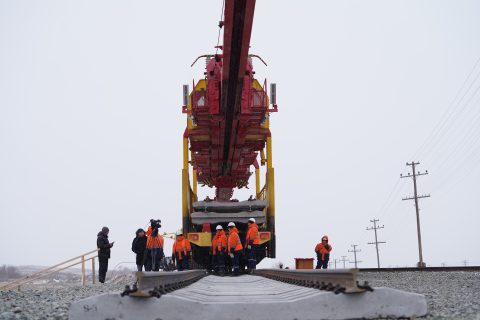The European Parliament’s Transport and Tourism Committee (TRAN) commissioned a study on Chinese investments in non-maritime infrastructure in Europe and the possible risks they might entail. The biggest risks identified concern Chinese influence on EU countries which, according to the study, needs to be better understood. The main conclusion that can be drawn from it is that “many of the risks can be mitigated with better monitoring and regulation and better coordination between the EU and Member States”.
The study analysed Chinese investments in non-maritime infrastructure in Germany, Greece, Hungary, Serbia and Turkey. When it comes to rail freight, the annual volumes transported between China and the EU between 2000 and 2022 increased by more than 24 times, the study stated. One of the possible issues highlighted in the document is that many of the Chinese companies investing in Europe are state-owned, “so their actions are not driven only by purely commercial motives”. The study investigated five types of risks (EU-level dependency risk, individual dependency risk, coercion and/or influence risk, cybersecurity/data risk and hard security risk) and their likelihood. Moreover, the study provides policy recommendations to increase knowledge concerning Chinese investments in the EU and strengthen the Union’s response both within and outside its borders.
Policy recommendations
The study listed various policy recommendations for the EU to have a clearer picture of Chinese investments in non-maritime infrastructure in the Old Continent. To gain more knowledge about these initiatives, the study advised that both the EU and all Member States should carry out studies. The EU should focus on “Chinese companies’ involvement in management software and other software along the TEN-T core network”. Member States, on the other hand, shall assess the presence of Chinese companies across their sections of the TEN-T Corridors.
The rest of the recommendations aim at reinforcing responses from the EU in the context of Chinese investments in non-maritime infrastructure. More specifically, the Union should encourage Member States to recognise the TEN-T network as critical infrastructure. Additionally, the study claimed there is a need for better guidelines concerning cargo safety, data collection and screening mechanisms to improve the monitoring of Chinese investments within the EU. Finally, the study suggested that the EU should “fund more investment in transport infrastructure” in neighbouring countries.
Germany: is COSCO’s presence in Hamburg a threat?
When it comes to Chinese investments in Germany, the study analysed COSCO’s acquisition of 24.99 per cent of the shares of the Container Terminal Tollerort (CTT) at the port of Hamburg. The study claims that the main possible risks concern Chinese influence and coercion, given the importance of the port. More specifically, it talks of “threats of coercion over the flow of trade between different European hubs, which could harm TEN-T projects along those logistics networks”. However, the study failed to mention that, not long after the CTT deal, COSCO sold its shares in a terminal currently under construction in Germany, the Duisburg Gateway Terminal.
Container Terminal Tollerort. Image: Wikimedia Commons. © Ajepbah
Greece: not enough volumes to consider China as a threat
Concerning Greece, the study examined COSCO’s presence at the port of Piraeus. The Chinese company operates two of the three piers at the port, with a concession expiring only in 2052. Moreover, in 2016, COSCO became the majority shareholder of the Piraeus Port Authority (PPA). In addition, the two entities signed an agreement in 2021, with which the Chinese giant would get an additional 16 per cent of PPA’s shares as long as some conditions are met.
“Chinese imports into the European market transshipped via the Port of Piraeus points to a figure between 10 and 15 per cent”, the study underlined. Here, intermodal connections are dominated by COSCO and its subsidiaries, including Ocean Rail Logistics (ORL). Risks in Greece are considered lower than the ones in Germany, the study said. This is mostly because “the railway transport corridor from Piraeus to Budapest still absorbs small amounts of containers at this stage – less than 200,000 TEUs in 2022”.
Rail freight terminal in port of Piraeus. Image: © Ocean Rail Logistics
Serbia and Hungary are where risks are higher
The study claimed that the highest risks connected to Chinese investments in the EU are being run by Serbia and Hungary. Here, China is one of the main actors financing the construction of the Budapest-Belgrade high-speed railway. “Coercion and/or influence risk represents the most important risk area in Hungary at present”, the study pointed out. The same was said for Serbia, where China is the single largest investor. However, the two countries might consider these risks as opportunities.
For example, Hungary has been looking east since 2012, when it launched its Eastern Opening Policy. Moreover, the study presents the BILK Terminal in Budapest as an example of Chinese influence in Hungary, where COSCO owns 15 per cent of the shares. However, it needs to be said that the main owner of the terminal is Austrian Rail Cargo Group (RCG), which holds the remaining 85 per cent. For Serbia, the study states that there is a strong dependence on China for the country’s IT sector, with Huawei being one of the main partners. This, according to the report, increases the risk of cybersecurity.
Belgrade-Budapest Line. Image: Wikimedia Commons. © M1AGG10N3
Turkey and the Middle Corridor
The study also analysed Chinese investments in Turkey, which is not a EU Member State but has been in negotiations to become one for almost 20 years. Here, most of the investments revolve around the Middle Corridor. The route has never been considered as a valid alternative to the northern route connecting China and Europe through Russia. However, the recent geopolitical developments led to more investments in the Middle Corridor. For Turkey, the study did not identify any risk as highly likely.


